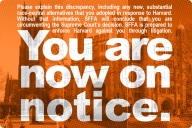You have /5 articles left.
Sign up for a free account or log in.
Last spring, as college and university officials fretted about how the global pandemic and associated recession might affect enrollment in the fall, troubling news emerged in the form of data about declines in the number of current college students who had resubmitted their Free Application for Federal Student Aid. As of May, renewals were down by about 5 percent -- higher among minority students and those from low-income backgrounds, suggesting that the most traditionally vulnerable students were far likelier to be deterred from continuing their educations.
That is indeed what happened. As the National Student Clearinghouse Research Center began releasing reports on fall enrollments in the final months of 2020, they showed modest declines in overall enrollment and sharper drops for underrepresented minority groups and community college students, among others.
If data on FAFSA completion are a canary in the coal mine for eventual college attendance, especially for higher education's neediest students, early statistics from the 2020-21 cycle portend that fall 2021 could be another tough one for colleges and universities -- especially when it comes to first-year enrollment.
According to an analysis by the National College Attainment Network, which focuses on reducing equity gaps in postsecondary access and success, the early data on FAFSA renewals by current college and university students are actually pretty good (with one notable caveat).
Through December, the number of continuing students who had submitted applications to renew their federal financial aid was running well ahead of this time last year (which was pre-pandemic), by more than 9 percent.
Bill DeBaun, director of data and evaluation at NCAN, said the "healthy" picture for renewals was heartening and suggests that colleges and students together have muddled through the current academic year well enough so far that many students seem willing to continue. "It's hard to read it as anything other than a vote of confidence in continued enrollment," DeBaun said.
One important qualification about the renewal numbers available so far, though: they don't allow for breakdowns by demographic groups. That's crucial, because while the troubling renewal numbers last May improved by the end of the 2019-20 cycle (renewals ended up down only 1 percent last August, compared to May's 5 percent), the renewal rate was down 3.3 percent for students who were eligible for Pell Grants and 5.4 percent for those from families earning $25,000 or less.
"So we'll want to see the data by income or Pell eligibility" before celebrating the renewal data too much, DeBaun said. (The FAFSA renewal data break the rates down by state, as well, showing students in states such as Alaska, Georgia, Nevada and New York renewing at higher-than-average rates and those in Illinois, Kansas, Kentucky and Vermont renewing at lower proportions than they did last year.
Worries About New Students
Heartened as he is by the renewal numbers, DeBaun and his colleagues are concerned about how many students are (or, more accurately, are not) filing first-time applications for federal financial aid so far this year.
Through Jan. 29, about 1.375 million students due to graduate high school this spring, or about 36 percent of the total pool, had completed a FAFSA form. That is 9.7 percent, or 148,000 students, fewer than had done so by the same point last year.
The data are worse for those concerned about equitable access to higher education, as seen in the charts below.
Students from high schools that qualify for federal aid because they enroll large numbers of low-income students are significantly less likely than their peers to have applied for aid to attend college, and students from high schools with large minority populations are almost three times less likely to have applied. Suburban students are significantly likelier than their urban or rural peers to have applied.
The one bright spot on this particular horizon is that the numbers at the end of January looked better than they did in the fall. Back in late October and November, the application gap between the current 2020-21 cycle and last year was over 15 percent, so after falling "into a big pit, we've been clawing our way back," DeBaun said. By contrast, in the three previous years he's been tracking these data, FAFSA completions have started out well ahead of the previous year's total, with those increases slowly shrinking through the winter and spring.
What is driving the decline in FAFSA completions? In a word, COVID-19, DeBaun said.
Normally FAFSA completion is almost a group affair: high schools or community organizations hold "financial aid nights" or attach FAFSA completion workshops to college fairs or other events for students who might be headed for college. And many high schools embed financial aid counseling and other forms of postsecondary readiness support into their broader advising activities, most of which happens in person during the school day.
Now, with many schools operating partially or entirely remotely and most in-person events canceled, "the FAFSA completion process is much more individualized," DeBaun said, with outreach to students or families on Zoom, sometimes one on one.
"We're estimating that the process of getting a student signed up for FAFSA is three times longer than normal," he added.
Beyond those practical impediments, experts on financial aid and disadvantaged students cite evidence that some of them are deprioritizing college-going amid competing demands to work or take care of family members, and that "even in a normal year, those students are going to need more support and encouragement to navigate the college-going process" than their wealthier peers do, said DeBaun.
"When we disconnect students not just from tactical supports, but moral supports, it's not surprising that we see those students falling off," he added.
What can be done about it? There aren't easy answers beyond "work harder," DeBaun said.
For high schools, "I'd start by looking at my FAFSA data, seeing what students have and haven't completed, and use that as a first step to triage your supports." Unfortunately, he added, "there's no way to do that at scale right now."
If they aren't already doing so, schools and community groups should be conducting virtual college visits and having financial aid counselors conduct virtual seminars. "Now is the time," DeBaun said.
And given how many colleges and universities are feeling the enrollment pinch more than ever right now, it's incumbent on them to ramp up their outreach efforts in their big high school feeder districts to encourage FAFSA completion.
Here are some recent examples of state, local and institutional initiatives to increase FAFSA filing:
- Education groups in Kentucky launched a promotional campaign called FAFSA February, citing a year-over-year decline in the number of high school seniors filling out the form.
- State officials in Connecticut and Indiana are contemplating requiring high school seniors to fill out the federal financial aid form to graduate. In Connecticut, a new state database shows what proportion of students at each high school have completed the form.
- A community foundation in Michigan is holding virtual seminars to encourage students to fill out the FAFSA and apply for the community's college scholarships.
"Every student we get to college in the fall," DeBaun said, "will be hard won."









